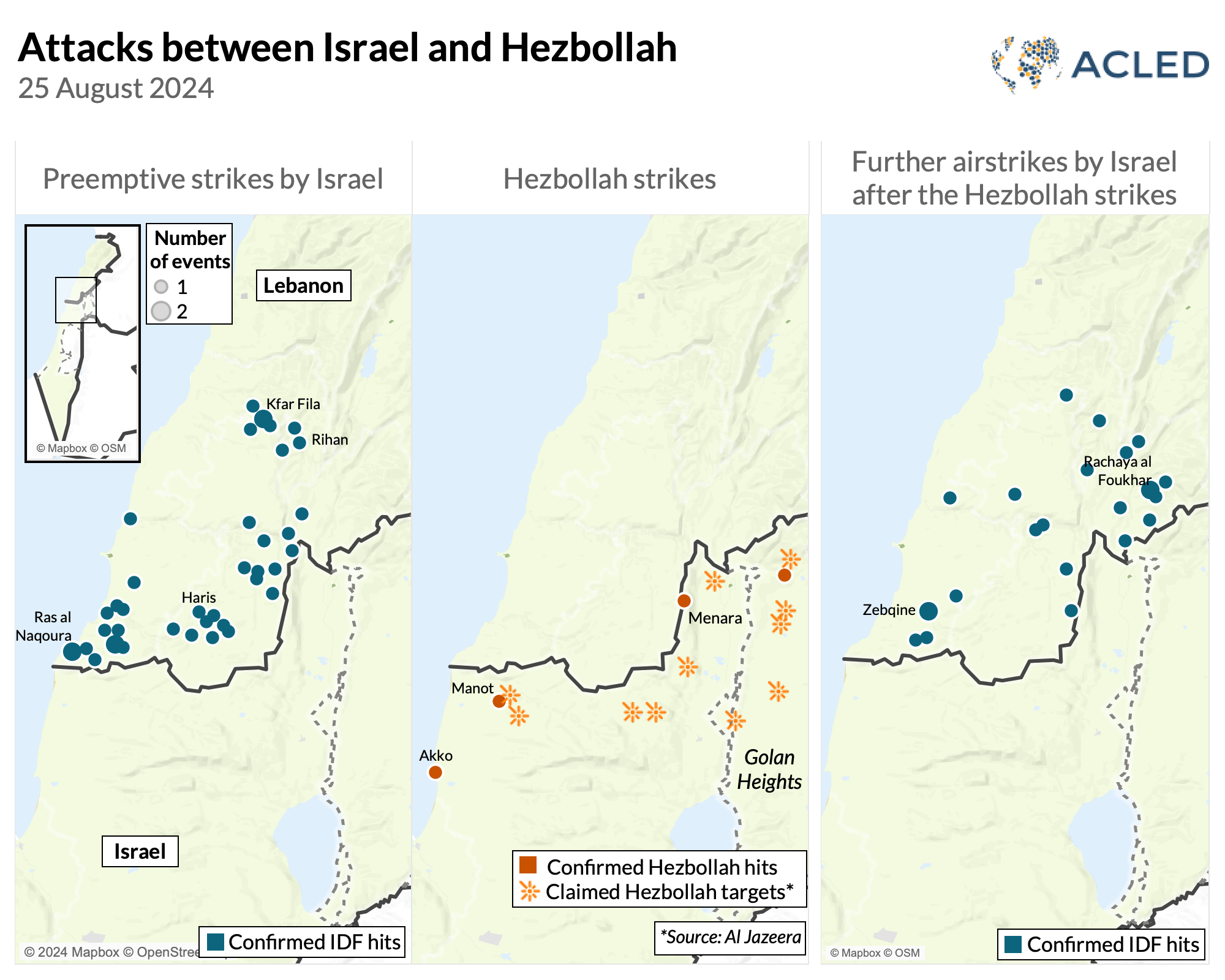On 25 August 2024, Israel and Hezbollah engaged in one of the most intense exchanges of fire since October 2023. Early that morning, more than 100 Israel Defense Forces (IDF) jets launched airstrikes on approximately 40 locations in southern Lebanon. The Israeli military said it had targeted hundreds of rocket launchers to thwart what it described as an imminent large-scale attack by Hezbollah,1France 24, ‘US helped track Hezbollah rocket, drone attacks against Israel, says defence official,’ 25 August 2024 which has been anticipated since 30 July after Israel claimed responsibility for the assassination of senior Hezbollah commander Fuad Shukr.
Hezbollah nevertheless launched hundreds of rockets and deployed drones against Israel shortly thereafter. The group claimed to have successfully targeted 11 military bases in northern Israel and the occupied Golan Heights, as well as an intelligence unit in central Israel. However, the reality on the ground is unclear as Israel issued a gag order banning reporting on damages caused to military bases.2The Telegraph, ‘Israel’s preemptive strikes ‘not end of story’, Netanyahu warns,’ 25 August 2024; Yonah Jeremy Bob, ‘ Have the IDF’s massive preemptive strikes prevented all-out war in Lebanon? – analysis,’ The Jerusalem Post, 25 August 2024 The IDF stated that none of its bases were “damaged” in the attack.3Gianluca Pacchiani, ‘Nasrallah falsely claims Hezbollah struck IDF bases, says Israel didn’t launch preemptive strike,’ The Times of Israel, 25 August 2024 The Iron Dome, Israel’s air defense system, intercepted the majority of Hezbollah’s projectiles, while others landed in open areas.4Times of Israel, ‘‘We don’t count’: Northern leaders complain military only acts when Tel Aviv is targeted,’ 25 August 2024 ACLED records less than a handful of reported direct hits (see maps below). One Israeli soldier, two Hezbollah fighters, and a Hezbollah-allied member of the Amal Movement were killed during Sunday’s hostilities.

Despite the heavy exchanges, both sides still seem intent on avoiding a full-scale war, and the much-feared larger and more intense escalation was averted for the time being. While Israel’s preemptive strike likely prevented a large part of Hezbollah’s planned retaliation, the Lebanese group did not attempt to target civilians or use new tactics and weaponry, including precision missiles that could have triggered a much harsher Israeli retaliation. The hostilities, however, continue to simmer as it is still unclear if and when Iran will retaliate for the assassination of Hamas leader Ismail Haniyeh, and the prospects for reaching a ceasefire in Gaza remain uncertain.
Correction: An earlier version of the map omitted the source for the locations of hits claimed by Hezbollah that were not yet available in the ACLED dataset. The information was from Al Jazeera.
Correction 2: An earlier version of the map placed the location labels per second administrative zone. The labels now reflect the city level.
Related publications:
Visuals produced by Ciro Murillo.




